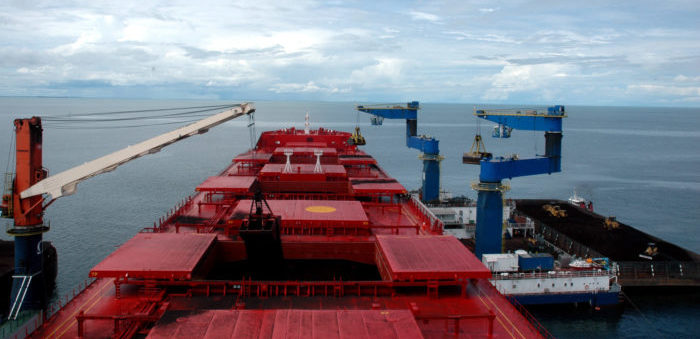In its latest Stop Loss publication, London P&I Club analyzed problems associated with the transportation of coal in bulk, such as self-heating and flammable gas (i.e. methane) release. Self-heating can lead to fires and the production of carbon monoxide (CO), whilst methane release can lead to an explosive atmosphere being generated in the hold.
Self-heating normally occurs in localised hot spots within a bulk cargo, and temperature measurements are unlikely to identify problems. However, when coal self-heats it produces CO, so measuring the concentration of CO is the most effective method to identify a self-heating cargo.
The atmosphere in each cargo hold should be monitored, at least on a daily basis, for CO, hydrogen sulphide (H2 S), oxygen (O2) and flammable gas (LEL-methane). If the holds are being ventilated, then ventilation should be stopped at least four hours prior to gas measurements being taken,
…advises Paul Willis, Senior Associate at Hawkins.
The IMSBC Code requires that the holds are ventilated for 24 hours after loading. However, unless expressly instructed to the contrary, coal cargoes should not be ventilated following this 24-hour period as unnecessary ventilation could promote the coal to begin to self-heat.
Once a self-heating reaction has started, further ventilation will provide oxygen which will exacerbate the self-heating and could lead to ignition of the cargo, Mr. Willis adds.
Only if the LEL levels begin to rise should ventilation be considered, and only for the minimum period necessary to remove any accumulated methane. As detailed in the IMSBC Code, if LEL levels reach 20% or more, then the ventilation should be maintained continuously (except for the purpose of gas monitoring). If the LEL-methane continues to rise after ventilation has been carried out continuously for a period of 24 hours, or if CO levels begin to rise, then the advice of an expert should be sought as a matter of urgency.
If there is a fire or high levels of CO, the ship should:
- Close hatches and all ventilation to the holds
- Ensure all spaces adjacent to the holds are checked prior to entry and that no-one enters confined spaces without confirming that it is safe to do so by checking the atmosphere inside
- Consider boundary cooling of the affected holds and locate the nearest ports of refuge
- Notify Owners and the P&I Club without delay
- Provide Owners and the P&I Club with all temperature and gas monitoring records for the voyage
The IMSBC Code provides mandatory requirements for the loading and carriage of coal:
- The cargo declaration should state whether the cargo has a history of selfheating and whether it has a tendency to emit methane (for Indonesian coals, self-heating is almost always encountered).
- Coal should not be loaded if its temperature exceeds 55˚C; this is especially important for self-heating coal as temperature above 55˚C is indicative that the coal is already at an advanced stage of self-heating. Although not required by the IMSBC Code, an infrared thermometer can greatly assist the crew in checking the surface temperature of the cargo prior to and during loading.
Despite the risks associated with the transportation of coal cargoes, the majority of ships carry coal without incident. Adhering to the requirements and recommendations in the IMSBC Code greatly reduces the risk of fire. If the Master only allows cargo below 55˚C to be loaded, and regularly checks it during passage, then problems can be identified at an early stage and prevented from escalating.

































































